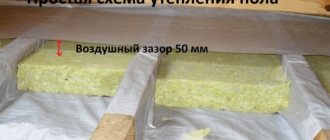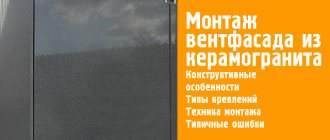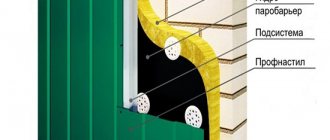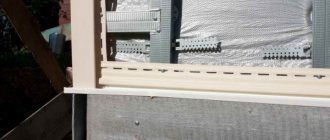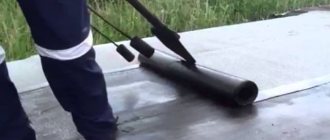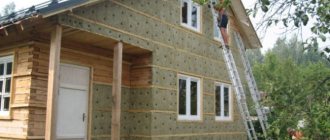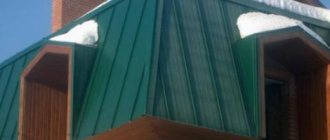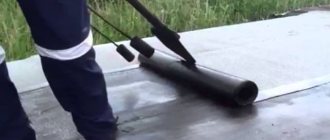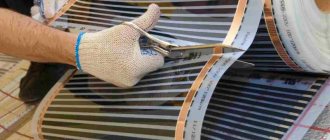January 2, 2021
One of the most common methods of finishing residential premises is wallpapering. Universal canvases are suitable for all types of coatings, emphasizing the planned design. “Cold” rooms require additional heat and sound insulation. The effect is achieved by gluing a special backing.
Purpose of the wallpaper underlay
The intermediate layer is used for:
- internal wall insulation. The material cannot be installed from the street side;
- reduction of noise level. Relevant when renovating rooms in an apartment building with thin floors;
- waterproofing. The substrate protects against high humidity and temperature changes. The wallpaper will remain in its original form, regardless of external factors. The accumulation of moisture on the walls prevents the formation of mold and mildew;
- leveling the walls. The material hides defects (irregularities, roughness). This allows you to save resources on preliminary filling;
- The process of wallpapering is simplified. This is achieved by strong adhesion of surfaces.
If we compare the characteristics of a room with and without a pasted backing, we can conclude that the additional layer enhances the quality properties of the wallpaper. The aesthetic appeal is maintained, regardless of the condition of the walls.
Calculate the thickness of the insulation
So, we found out whether it is possible to insulate walls from the inside and how to do it correctly. Then we chose the material that suits us best
An important matter remains - calculating the required thickness of the heat insulator
First, we measure the wall thickness D, and determine R - the actual heat transfer resistance. We use the formula:
R=D/L
L is the thermal conductivity coefficient of the material. For example, let's take a brick wall 50 centimeters thick. We get the following:
R=0.5/0.47=1.06 square meters-degree Celsius per watt.
In Moscow and the Moscow region, the standard value of this indicator is 3.15 or more. We calculate the difference to be 2.09 square meters-degrees Celsius per watt. This difference must be compensated by insulating the walls.
To determine the thickness of the insulation, you need the inverse formula:
D=L∗R
For expanded polystyrene, for example (L = 0.042), the following value comes out:
D=0.042∗2.09=0.087 meters, otherwise, 8.7 centimeters. It is better to take a margin of 10 centimeters, then the dew point will definitely be inside the heat insulator.
Kinds
The classification of substrates is based on the type of wallpaper. When choosing a base, a number of factors are taken into account:
- number of residents;
- schematic layout of the room (room as a whole);
- characteristic climatic norms, including variations in temperature and humidity.
There are several types among the popular models.
Polyethylene foam backing
It is a rolled fabric with a porous structure. It is characterized by low weight and low thermal conductivity. Muffles extraneous sounds. Taken together, the indicators create a quiet, cozy environment in the room. The material retains its properties when heated to 90°. Helps retain heat.
This feature allows you to save resources on heating the room. There is no need to carry out technically complex and expensive work on insulating partitions.
Foamed polyethylene belongs to the budget price segment. Purchasing a roll with dimensions of 14×0.5 m will cost approximately 1,300 rubles.
Cork backing
It is in demand due to several significant criteria:
- good sound insulation;
- high sound and heat insulation characteristics;
- environmentally friendly product. Natural raw materials are absolutely harmless to residents.
The material is popular when arranging recording studios.
The building material is used in apartments with thin walls, properties located near city highways. The ability to absorb sound will also protect against loud barking from street and neighborhood dogs. However, noise from the operation of industrial equipment (construction tools) cannot be completely isolated.
In terms of thermal conductivity, cork is on the same level as foam plastic (0.04 W).
Among the shortcomings, vulnerability to liquids was identified. The fabrics absorb moisture well and, as a result, swell. Experts do not recommend using this type of substrate in a room with high humidity levels.
The price of the substrate is acceptable - 250 rubles/m².
Gluing technology
Pasting such soundproofing wallpaper will not take much time and effort. Gluing the backing is very easy. If you have worked with wallpaper before, then this work is also within your capabilities, the technology is similar. There is no need to carefully prepare the wall, unlike wallpaper. Here are the steps to apply the insulating material:
- There should be no previous material left on the wall. Large cracks and crevices must be smoothed over with plaster. The wall should be fairly dry, even and clean, without huge differences.
- Next, you need to cut the roll of substrate into sheets of the required length. The lightness of the material makes it easy to manipulate. The technology is almost identical to wallpaper gluing.
- For the Polyf type of substrate, we use glue on which heavy wallpaper is attached. We glue the non-woven linings using glue for non-woven wallpaper. When using it, apply glue only to the wall, not to the material. When mounting the polyethylene foam backing, we coat the wall and the backing itself with glue.
- Glue the strips seam to seam. For durable fastening, we reinforce the seams with paper tape. Let the walls dry for 72 hours, after which you can begin finishing.
By choosing the type of wallpaper underlay necessary for your case and installing it correctly, you will improve the quality of the finish, and with it, comfort. The sound-absorbing and heat-insulating properties of this material will protect you from harsh temperatures and noisy neighbors.
Installation
The gluing technology is not complicated. The procedure is accessible to a person without construction experience. Does not require much time or labor. Pasting is identical to the principle of fixing wallpaper, so you can handle the task yourself. Preliminary preparation of walls (priming, puttying) is optional.
The substrate is attached in several stages.
- Clear the partition of debris . Remove any remaining plaster. Remove previous finishing material. If there are significant defects (chips, cracks, gaps), it is necessary to fill the voids with a corrective mixture. After application, leave the wall to dry completely. Align the sealed seams, clean off any remaining material.
- Cut out the insulating fabric . Mark and cut pieces to the required length. The substrate is elastic and light weight, so discomfort during operation is eliminated.
- Choose the appropriate glue . To secure sound insulation, you can use a solution of the Polyfom brand. Pay attention to the markings. A composition intended for gluing heavy types of wallpaper is suitable. If non-woven wallpaper is used as a finishing material, it is necessary to focus on the adhesive composition of the same name. In this case, the glue is applied exclusively to the wall. Polyethylene insulator requires applying the mixture to the canvas itself.
- Evenly distribute the adhesive base on the substrate . Leave for 10 minutes. Afterwards the material is glued to the wall.
- Smooth the surface with a silicone spatula . A dry rag will do if you have the means at hand. This is necessary to eliminate air bubbles accumulated under the cloth. To enhance the effect, the joints are sealed with paper tape.
- Leave the room for a day until the adhesive mixture dries completely.
- Go to wallpapering.
To avoid common mistakes in attaching the substrate, it is recommended to study the instructions before starting work. The manufacturer indicates the specifics of the gluing technique.
Some roll substrates are pre-rolled on the floor. This is necessary for leveling and smoothing out creases. Some models just need to be treated with glue. The shape will be restored under its own weight. When choosing thin insulation, extreme care must be taken. The capricious material requires careful handling.
Important! For high-quality treatment of the room, it is necessary to act in accordance with the requirements specified in the user manual.
Some rules for carrying out thermal insulation work at the dacha
Of course, the price of the material also influences the choice of the type or brand of insulation, but, in addition, it should be taken into account that materials for its installation will also be required, the cost of which can significantly offset the economic benefit of purchasing a cheaper insulator.
Installation of thermal insulation material can be done in different ways, but insulating a house from the inside is best done using special adhesive compositions intended for this type of work, as well as fastening elements: dowels, including umbrella dowels, self-tapping screws and even nails.
But in some cases, this set will not be enough and it will be necessary to construct a sheathing, which not only serves as a basis for laying insulation, but also acts as a ventilation gap to allow condensate to evaporate. In such cases, the use of a vapor barrier film is also required, which simultaneously serves to protect the thermal insulation material from getting wet and to freely drain condensate.
Laying a diffuse vapor barrier film can be done both between the insulation and the outer layer of finishing, and additionally between the outer wall and the heat-insulating material.
The choice of method is determined by the material from which the walls of the house are built, as well as the type of insulation itself.
In some cases, protection from moisture is required not only for the latter, but also for the walls themselves, which may begin to collapse as a result of constant exposure to moisture. This factor is especially important when thermally insulating wooden houses and especially if the walls are insulated from the inside with penoplex - a material with low thermal conductivity, which allows the use of products of small thickness, but with almost zero vapor permeability, which in a particular case can be dangerous for a log house.
Prevention of problems associated with the formation of cold bridges
During work, it is important to correctly lay the thermal insulation material, without allowing even a millimeter of bare wall - neglecting this rule will lead to the formation of cold bridges through which heat will freely flow out and cold air in, and in addition, such places become areas where Condensation actively forms, and then mold appears. The formation of cold bridges can also be caused by fastening elements, and this is especially noticeable in the example of wooden houses, for which the use of metal parts is undesirable. The formation of cold bridges can also be caused by fastening elements, and this is especially noticeable in the example of wooden houses, for which the use of metal parts is undesirable
The formation of cold bridges can also be caused by fastening elements, and this is especially noticeable in the example of wooden houses, for which the use of metal parts is undesirable.
If possible, it is recommended to use wooden elements that have the same thermal conductivity, and if it is necessary to use metal ones, insulate the latter, for example, with wooden or plastic parts, as well as with the use of thermal insulation materials.
Recommendations
To avoid damage to the material, it is appropriate to take into account the advice of experts:
- Paper-based substrates cannot be used in rooms with high humidity. Water causes the fabric to swell. In addition, the risk of mold formation increases;
- inspect the room for fungus. Even a minor infection requires complete treatment with antifungal solutions. Start work after removing parasites;
- You can eliminate the gaps between the layers of the substrate with paper strips. For fastening, standard PVA glue designed for gluing paper is suitable.
Application Features
The instructions for applying the substrate are very simple, just follow a number of rules:
- Remove any remaining old trim and loose pieces of plaster. Fill large cracks and chips with putty;
The wall before facing should be as clean as possible and free from damaged areas.
- Prime the wall before gluing the wallpaper under the backing;
The primer will ensure maximum adhesion of the substrate to the wall
- Cut the roll into sheets of the required sizes in advance;
All substrates are very easily cut into fragments of the desired dimensions
- Make sure the room temperature is around +10 degrees Celsius . At a lower temperature, the glue will not be able to gain sufficient strength; at a higher temperature, it will dry out too quickly, not having time to fix all areas of the finishing fabric;
- After applying the glue to the substrate, wait a few minutes until it is well absorbed, and only then apply the canvas to the wall. It is best to use PVA for this purpose, rather than ordinary wallpaper adhesives.
The backing sheet is applied a few minutes after treating its back side with glue.
Criterias of choice
The most common type of insulator is cork backing. The material hides wall defects and simplifies the process of fixing wallpaper. Mainly used to absorb sounds in a noisy environment (for example, a recording studio). Quality characteristics are directly proportional to the thickness of the canvas. A thin layer is ineffective. The chance of protecting yourself from loud neighbors and the sounds of industrial equipment is zero. However, thicker versions perform the soundproofing function in full.
If you need to secure the substrate to concrete walls, it is appropriate to purchase polyethylene foam. A feature of concrete is rapid heat loss and freezing. This type of substrate acts as a good heat insulator. Prevents premature cooling of the room. Protects wallpaper from excess moisture.
The line of popular substrates also includes non-woven fabric. The material promotes natural air exchange and removes excess moisture. Used to soundproof a room.
If there are walls with severe flaws or a specific design, plywood or plasterboard is used as a substrate.
If the condition of the walls requires gluing polyethylene foam, its types must be taken into account. The product is available in three versions:
- not stitched. Gas foam;
- chemically cross-linked;
- physically stitched.
The first option is cheap. This is due to the ease of production. However, the strength and insulating properties of the material are 25% lower than others. The efficiency of non-crosslinked gas foam polyethylene foam is low.
Stitched models are characterized by closed pores. The chemical and physical versions have similar characteristics despite the fact that they are produced by different technologies.
When choosing a polyethylene backing, it is necessary to visually assess the condition of the canvas:
- evenly applied color;
- strength of fixation of the paper layer to the base;
- no pungent odor;
- restoration of shape after deformation. Just press your finger on the surface. High-quality media will quickly return to its original shape.
Properly chosen sound insulation is a guarantee of peace of mind and the preservation of a quiet, cozy atmosphere in the room.
Types of paper bases
The paper base is used for both textile and vinyl wallpapers. Equally good for working with ceilings and walls. It is ideal for both wall and ceiling work.
Main types:
• compacted thick base – can withstand heavy coating;
• thin – does not have sufficient density and strength.

The wallpaper base is able to distribute the glue evenly
The waste paper base should be glued with the same glue as the wallpaper. Pre-lubricate the wall, and then the paper base itself.
Remember! The paper canvas is glued to the wall strictly horizontally, from top to bottom. This will help you in applying joint to joint of decorative wallpaper.
To glue the paper backing, it is also necessary to first clean the walls of old wallpaper or coating, as well as putty and primer if necessary.
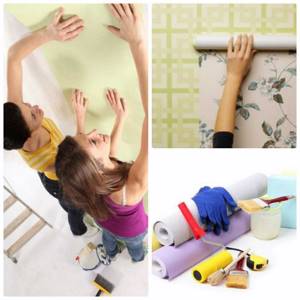
You need to glue the waste paper base with the same glue as the wallpaper.
Advantages
Building materials intended for rough finishing of partitions simplify the process of gluing wallpaper. In addition, they increase the level of comfort in the room. Some craftsmen also use a backing for decorative work.
Along with the main advantages, the canvases have a number of advantages:
- strength. Resistance to mechanical damage is implied. Thanks to its elasticity, it is invulnerable to tearing;
- made from natural, environmentally friendly raw materials;
- blocks the formation of fungus and mold. Prevents the spread of insects;
- long service life;
- aesthetic appeal that allows you to create comfort;
- the substrate belongs to the budget price segment.
Effect after insulation
People planning to renovate their apartment doubt that insulation under wallpaper really “works.” First of all, the question is about its thermal insulation abilities. To prove the performance of roll materials, the following examples can be given:
- Polyfom has a thermal conductivity coefficient of 0.03 W/mK, which can be equated to brickwork more than 10 cm thick or a wooden covering 5 cm thick.
- Foil insulation 5-6 mm thick provides thermal insulation similar to a half-brick brick wall.
- Numerous experiments show that cork insulation 8-10 mm thick raises the temperature inside an unheated room by 3-4 degrees.
These examples perfectly show that the insulation under the wallpaper copes with its task. In addition, it must be taken into account that the cork creates a thermos effect. It helps keep the house cool in hot weather. To obtain complete comfort in the house, you should ensure a combination of wallpaper insulation with external wall insulation.
Flaws
When purchasing a substrate, you need to take into account specific features:
- thickness. A thin layer of sound insulation will not protect against extraneous sounds (noisy neighbors, operating equipment, animal voices);
- Some varieties have poor air exchange.
Among the model range, there are several manufacturers whose activities are aimed at selling products in the CIS and the Russian Federation.
Ecohit . The Izhevsk company produces thermal insulation sheets that reduce noise levels in the room. A distinctive feature is invulnerability to liquids. Installation in a room with high humidity is acceptable.
If you have any questions, you can always call the phone number listed on the website or write to the chat. Our specialists will help you choose the substrate, glue and other materials.
Primer of walls
This is a necessary condition. We can say that the outcome of the entire repair depends on it to one degree or another. The primer is done before you start gluing wallpaper, puttying or plastering the walls. And, of course, you should never neglect this stage.
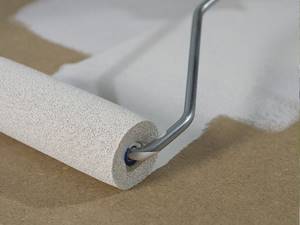
Priming the wall before wallpapering
Before you start priming the wall surface, you need to complete a few important steps.
Make the surface suitable for work; Make sure the surface to be treated is dry and free of dirt. The necessary manipulations can be carried out using a sponge or brush.
Once you are sure it is clean, proceed to apply the primer mixture itself. To speed up the process, use special brushes, rollers, spray guns, and so on.
Important to remember. The main task of the primer is to completely cover the base before using the finishing material. And for this, oddly enough, you need a wide variety of tools. Surfaces with high moisture absorption must be treated with specialized brushes, with which you can achieve deeper penetration of the soil mixture into the bases of walls or ceilings.

Soundproofing base – helps suppress noise both outside and indoors

